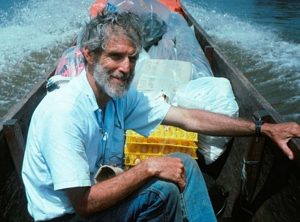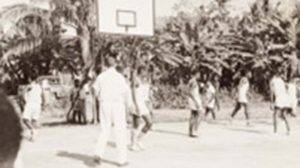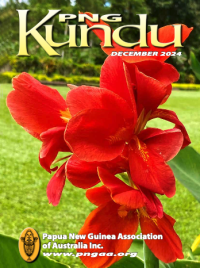VALES
PERRY | TROY | WEARNE | YOUNG
PERRY, Roland Lewis (Ron)
13 July 2024
Ron Perry grew up in Tucson, Arizona, USA during the 1930s Depression. Both his grandfathers died young. Their widows and extended families instilled an early work ethic which saw Ron buying and selling before he was old enough to get a paying job: vegetables, rabbits, chickens and eggs; whatever helped buy things his parents couldn’t afford. Sometimes he found fragments of Native American pottery in the desert. Tucson dealers bought whatever he picked up.
In the summer heat, his grandmother and great-aunt would load up the family’s youngsters and drive to California and the beach—a real treat for desert kids. That love of travel, fun and adventure stuck. Hard work and a ready smile would get Ron ‘on the road again’. Ron left his University of Arizona studies to surf in Hawaii. When called up, he served with the US Army in Korea, after which he hitchhiked through India, Iran, Pakistan, Afghanistan, Nepal and a good portion of Southeast Asia before emigrating to Australia.
Ron met Barbara Hockey in Surfers Paradise, Queensland. They married and worked on her father’s sheep station, adding a daughter, Michelle, and a son, Scott, to the family. The couple convinced Barbara’s father to sell the Dubbo station and move to Sydney. Social life in Sydney was a whirl. It was all great fun, but Ron was bored.
In 1964, an artist friend from Hawaii, Flo Chang, came to visit. Flo’s ticket took her to Port Moresby where she bought as much New Guinea art as a small woman could carry back in her acquired bilums. Flo told Ron, ‘I’m sure they have much better art in the villages, better prices too.’
Ron booked his first ticket. He worked off and on in the Territory of Papua and New Guinea for 14 years: surveying, sometimes managing Jim McKinnon’s sawmill and trade store in Angoram and running the first tour boat on the Sepik River. Ron loved the expat congeniality and the lifelong friendships of the clubs in Angoram, Maprik, Mt Hagen and the Wewak Yacht Club.
With air and road access from the coast to the Middle Sepik River, Angoram was a bustling place. Besides the patrol post, there was a post office, hospital, trade stores, Catholic and Protestant missions and the Angoram Haus Tambaran where carvers sold their art.
There was also that centre of expat social life, the Angoram Club, where Ron formed lifelong friendships. Ron and Ella Lucas, with their sons, became Ron Perry’s Angoram family. Ron and his mates ran a newspaper advertisement ‘wife wanted’ for one of their single friends. They had great fun going over the letters and photos that arrived. Their friend and his chosen wife did live happily ever after.
Ron bought and sold artifacts to pay for his trips. After Independence, he managed Village Arts for the Papua New Guinea National Cultural Council. Good friends in Port Moresby included Morris Young, Reg and Judy MacDonald, Henry Veratau, Ken Lifu and many more.
In 1978, Ron, along with some Sepik carvers, accompanied a collection of PNG art to the American Museum of Natural History in New York. They stayed at the YMCA. Anthropologist Margaret Mead was the guest of honour opening the exhibition. One morning, Ron received a frantic call saying the Sepik men had gone missing. They were ol big man in their villages and not about to sindaun nating in New York. They eventually showed up, and it ended well, but Ron never was sure where they went.
In 1979, Ron and Barbara divorced, and Ron returned to Tucson, but PNG always drew him back. With initial financial backing from his cousin, Kelley Rollings, Ron continued yearly trips to Australia and PNG, especially the Sepik River—man bilong Sepik tru.
In 1988, Ron, with his Tucson partner and wife, artist Carolyn Leigh, fulfilled a lifelong ambition to explore Irian Jaya (now West Papua) and the rest of Indonesia. Other trips took them to New Zealand, Australia’s Tiwi Islands, China and the Solomon Islands.
Carolyn created their website, https://art-pacific.com/ and wrote a book titled Art Dealer in the Last Unknown, an account of Ron’s early New Guinea years, 1964 -1973. Ron and Carolyn, along with their long-time manager, Doug Mehaffey, continued, and still continue, the family art business.
Carolyn adds: I landed in PNG on my 40th birthday—wow! We headed for the Sepik River. The Angoram Haus Tambaran was still standing, full of men and their carvings, and the women were outside with bilums and food for sale. Garamut drums beat out the news of our arrival. Ron bought from everyone. He knew what it was like to earn some money—to buy rice, tobacco, fishhooks, maybe a beer in the hotel bar.
Without friends, we could never have travelled as we did. In Wewak, Peter Johnson and Laura Martin provided us with housing, food and drink, lots of fun, and temporary storage for our artifacts and a site for our shipping containers. On the Sepik, the Kambaramba men, Jeremia Mopa and, later, his son, Bom, ran our canoes. Later, Peter Dimi bossed the double canoe houseboat we rented from Lesley Martin. Roland Maein, who worked for Ron in Port Moresby at Village Arts, Cletus Smank and many others along the Sepik and its tributaries, provided lodging after the patrol posts closed. George Leahy and his brothers provided for us in Mt Hagen.
We always found Ramu and other artifacts at Robin Hodgson’s shop in Lae interesting. When we left Wewak and headed out on the Maprik road to Hayfield and the South Wosera, Dieter Idzikowsky was ready to put us up and give our trusty pick-up, ‘Clem’, a tune-up. Geoff and Monica Leong changed our traveller’s cheques for small bills at their trade store so we didn’t have to walk out of the Wewak bank carrying a bulky lot of cash.
Ron always paid cash which saw us carrying thousands of kina in small bills. My job was keeping records of what we bought (for our museum export permit), taking photographs, counting out the money for each buy, and running a logbook tally as Ron would complete dozens of buys in a day. We never carried a gun or other weaponry apart from our crew’s bush knives. The villagers kept us safe. They wanted us to come back. If we found trouble in a place, we never went back. Most were longtime friends, locals and expats alike.
Tenkyu tru to all our wonderful family and friends, including the art dealers, their staff and collectors, too numerous to name, around the world, living and deceased, who helped make our amazing adventures possible—all the way to the unexpected, sudden end of Ron’s life.
Scott Perry said it well: Dad was more than a father; he was a pioneer, adventurer and a renowned tribal art dealer with an unparalleled passion for Papua New Guinea. His journey took him from the deserts of Tucson to the lush landscapes of New Guinea, where he spent over 50 years immersed in its rich culture and history. His life’s work was not just a career but a love affair with the art and people of this incredible region.
His legacy is vast, marked by his extensive travels and deep connections with the communities he so dearly cherished. He was a storyteller, a cultural bridge and an inspiration to many. We will forever miss his adventurous spirit, his stories of far-off lands and his unwavering passion for life and art.
TROY, Clive
16 April 2024
Clive was born in Wollongong, New South Wales on 30 May 1937, spending his early years in Manly, New South Wales. After completing his education in 1955, in Warwick, Queensland, Clive was appointed to a position in the Department of Treasury in PNG in that same year and served as a district financial controller and auditor for 11 years in four centres: Port Moresby, Rabaul, Lae and Madang.
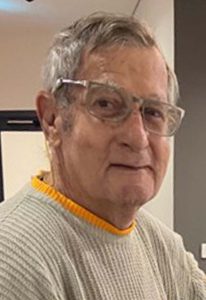 Clive was awarded a Churchill Scholarship to study overseas which led to him resigning from the administration, marrying his wife, Harriet, and heading overseas, the Troys eventually settling in the Philippines. Clive started up and ran several enterprises in the Philippines, becoming a founding member and office bearer of the Australian Philippines Business Association, serving in the Philippines and in Australia. Clive and Harriet returned to Australia in 1988.
Clive was awarded a Churchill Scholarship to study overseas which led to him resigning from the administration, marrying his wife, Harriet, and heading overseas, the Troys eventually settling in the Philippines. Clive started up and ran several enterprises in the Philippines, becoming a founding member and office bearer of the Australian Philippines Business Association, serving in the Philippines and in Australia. Clive and Harriet returned to Australia in 1988.
In January 1960, Clive enlisted in A Company, PNGVR Lae. During his three years with PNGVR, Clive also served in C Company in Madang (there was a platoon of C Company in Madang at the time) and D Company in Port Moresby. Besides being a member of the NGVR & PNGVR Association (PNGVR) for many years, Clive was a long-time member of the Papua New Guinea Association of Australia (PNGAA) and a founding member of the Rabaul and Montevideo Maru Society.
Clive and Harriet’s home was shared between the Philippines and Beecroft in Sydney. Apparently, the subject of the Montevideo Maru’s sinking was raised at a luncheon in Brisbane, which Clive attended. He realised the significance of the US Hellships Memorial at Subic Bay (a huge US naval base during the Vietnam War), about a two-hour drive north of Manila and only a couple of hundred kilometres from where the MvM sunk.
With Harriet’s support, Clive immediately set about organising a Montevideo Maru plaque for the Hellships Memorial. He submitted his ideas to the Rabaul and Montevideo Maru Group in the PNGAA and it was accepted. Clive also visited our Wacol Museum and addressed the management committee about the project. From this small beginning, with Clive’s networking skills and his Philippine experience, a memorial plaque was dedicated on 1 July 2009, with about 20 people from Australia attending.
Clive orchestrated for the PNGAA, PNGVR, the 2/22nd Battalion and Lark Force Association and others, including himself and Harriet, to contribute and attend the Service. Clive arranged for the necessary approvals and co-ordinated the installation of the plaque. The Australian High Commissioner to the Philippines gave the key address, and there were representatives from the Australian navy and army, the Philippine Army guards, American Embassy officials, various local RSL Clubs and the Angeles City Brass Band in attendance—it was truly a remarkable and moving day.
Knowing NGVR soldiers were on board the Montevideo Maru and knowing relatives of those who lost family members through the PNGVR and PNGAA, his recognition of the sinking of the Montevideo Maru by the Americans in Philippine waters became an important part of Clive’s life. Clive always thought outside the square as to who he might assist, to bring comfort to family members.
Clive remained a committee member of the Rabaul and Montevideo Maru Society for several years and significantly contributed to the Rabaul and Montevideo Maru Memorial in Canberra, which was dedicated on 1 July 2012, the 70th Anniversary of the ship’s sinking.
Clive had a long and interesting life—he was unconventional, had a very dry sense of humour, travelled extensively, was widely read using knowledge from his large collection of biographies and eclectic library effectively in conversations and ideas. Clive was always willing to help when asked and stepped in to help others when needed.
In his retirement, Clive contributed to the community by actively lobbying politicians, in writing and personal representation, at all levels of government on subjects of his interest, which he considered important to the community. Clive donated his body to medical science.
Clive is survived by his wife, Harriet, and their four children.
Phil Ainsworth
WEARNE, John Mowat
9 August 2024
John was a patrol officer in Papua New Guinea from 1951 to 1970, working in the Sepik, Telefomin, New Ireland, Manus and at headquarters in Port Moresby. His interest in PNG remained very strong until his death.
We visited New Ireland, Wewak, Bougainville, Rabaul and other places 20 years after he retired, and it brought back many great memories of raising our family (two daughters and two sons) in that beautiful country. Three of our children were born in PNG, and the other one was conceived there. Life in the PNG Highlands and the coast is unforgettable even 50 years later.
Pat Wearne
YOUNG, Robert
14 May 2024
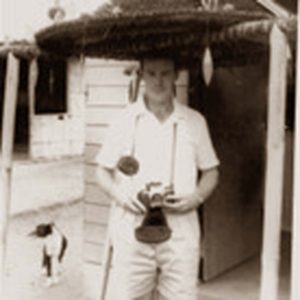
Bob Young in 1965—he later sold the camera to pay for a return ticket home— photo from family collection
Bob Young was born on 13 May 1940, and lived in Papua New Guinea between 1964 and 1973 in various education roles, starting with attending the 1964 E-Course in Rabaul. His last role was as a lecturer at the Administration College in Port Moresby in 1973.
In 1966, Bob went to Kerema, where he met the peripatetic welfare officer, Mary Tait.
They married in 1967 and had two children, Michael and Amy. Amy was born in Port Moresby in 1973 and, years later, discovered that she was a citizen of neither Australia nor Papua New Guinea.
Like many expatriates working in TPNG in the sixties, Bob had had a diverse range of experiences before going to the Territory.
Bob was born in Sydney in 1940. After the war, he lived in a tent for some years on a block in Yowie Bay while his father built a house for the family. He attended Hurstville Public School where Clive James was in the same opportunity class. After leaving Sydney Boys High School at 15, Bob signed up for nine years in the army. As an apprentice in telecommunications, he also studied carpentry and bricklaying. Bob did not enjoy authority (he led a strike over the quality of food), and the army agreed to let him go when he decided to study for the priesthood.
In 1964, after two years in the seminary and a year studying law, Bob applied for a place in the E-course in Rabaul, to train as a primary school teacher in TPNG. He was then recruited by the Sacred Heart Mission to teach at Chanel College, Ulapia, near Kokopo. Bob taught Form 2 Latin, English and General Science at the Regional Junior Seminary for the South Pacific Conference. He also supervised the siting and foundation works for a new accommodation building; his army training was useful.
In 1966, Bob was back teaching for the government in the Junior Technical School at Kerema in the Gulf District. The all-male students were attempting to sit the High School entry exams for a second time, as well as undertaking technical education. They lived at the school and cooked their own meals. Bob depended a lot on his excellent assistant instructor, Heni Semese, a carpenter from Iokea, in the Toaripi area of the Gulf.
Bob wrote:
Kerema was a fairly remote backwater, but there were adventures. I had the boys build a 70-foot-long saddlery shed for the agricultural department’s extension station upriver at Murua. We built it first on flat ground near the Tech School, broke it down again and shipped it up river on big outrigger canoes. I went up and pegged out the ground and then sent the boys up with an instructor (unsupervised by me.) They did a good job.
Another time, we built a patrol headquarters (sounds grand, but it was just a 10-foot by 10-foot corrugated iron shed with one push-out ironclad window and a door. But this shed was to go to Kaintiba in the Kukukuku mountains—no river, no road and no airstrip. So we divided each sheet in two with a bolted scarf in the middle, wrapped it all in the corrugated iron sheets and bound the lot with fencing wire. That way, when the bundles were manhandled out of the side hatch of the DC-3, the wood would not shatter, as the iron sheets would bend around them when they hit the ground.
During the drop, the kiaps below had a hard job keeping the wild tribal warriors off the ground cleared for the airstrip. The hut was to become the construction headquarters for kiap overseers, plus their food and equipment, including rifles, pistols and ammo for them and the police squad.
Mary remembers Bob Deverill as the first patrol officer at Kaintiba.
Towards the end of 1966, Bob travelled down the coast to Kukipi to inspect the damage to a school caused by a falling tree. He said:
‘was entertained to dinner at the kiap’s house, given all the beer I could drink, and the grand fun of shooting a .38 Smith and Wesson revolver at beer bottles thrown by the cook. Needless to say after I don’t know how many bottles of beer, we didn’t hit the target very often.’ (Name of well-known kiap withheld)
Bob then decided to do further studies, so he went to Melbourne and taught at Norwood High School on the basis of his E-course training and leaving certificate in Maths and Chemistry. Bob matriculated by private study and was accepted by Monash University to study—what else?—Sociology and Anthropology. To his great surprise, in the first year, Bob came first in three subjects, deciding to become an academic. ‘I can do this stuff,’ he said.
At the end of a four-year degree, Bob returned to Port Moresby with his family to work in the Research Branch of the Ministry of Education. Bob wrote of those two years:
‘I managed the research grants program for visiting researchers, organised conferences, and carried out research of my own plus any projects the minister for education wanted done. I got involved in the development of a new model for Junior Technical Schools which involved the head teacher making patrols to win the support of the older generation for their learning. I worked with Bob Bailey, the guy running the Makana school just outside Port Moresby. I was able to attract Albert Maori Kiki to be honorary president of the board of management while I became active in supporting Bailey and running bureaucratic interference for him.
I also attended the PNG Education Board a few times and was able to make an argument for Bailey’s new model of a vocational centre to a visiting deputation from the World Bank. Later, the Bank funded a school for training teachers for the vocational education schools and Bailey was its first head.”
In 1973, Bob lectured at the Administrative College, teaching sociology to local administrators. He also completed an MA at the University of Papua New Guinea on the views of the new elite. His conclusions were not popular in certain quarters. At self-government at the end of 1973, Bob and his family returned to Melbourne.
He made several return visits over the years to the country, which had been a central influence in his life. Bob achieved his ambition to ‘become an academic’ and spent 25 years at Sydney University as a lecturer, senior lecturer and finally, a reader. He followed, at a distance, the ongoing developments in Papua New Guinea.
His family will miss him greatly and will miss his tales of the colourful characters, both local and expatriate, he knew in TPNG.
Mary Young (née Tait)


